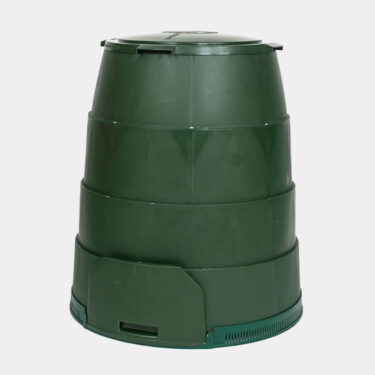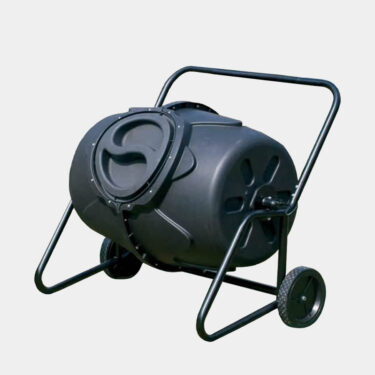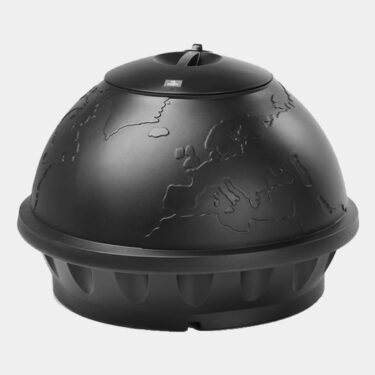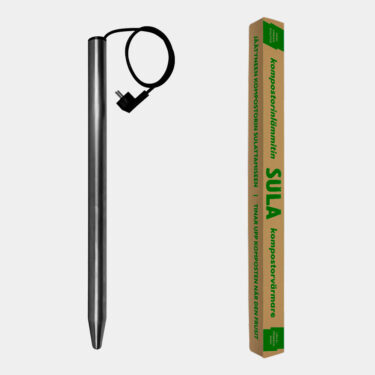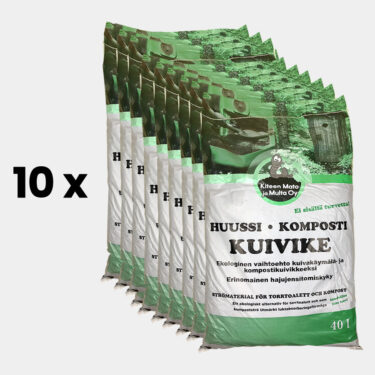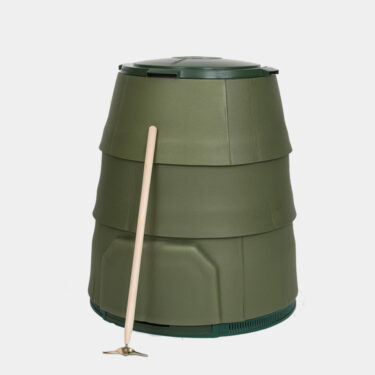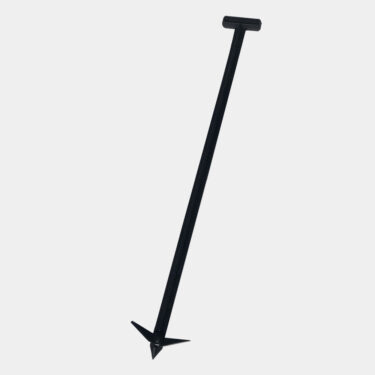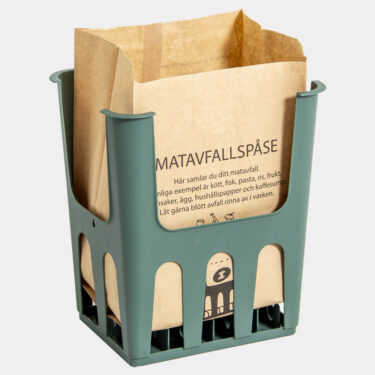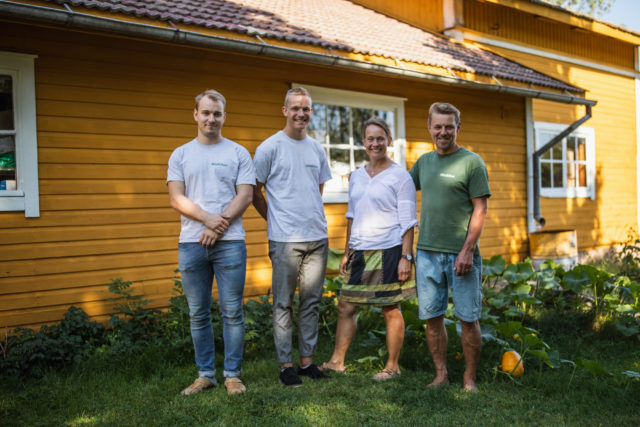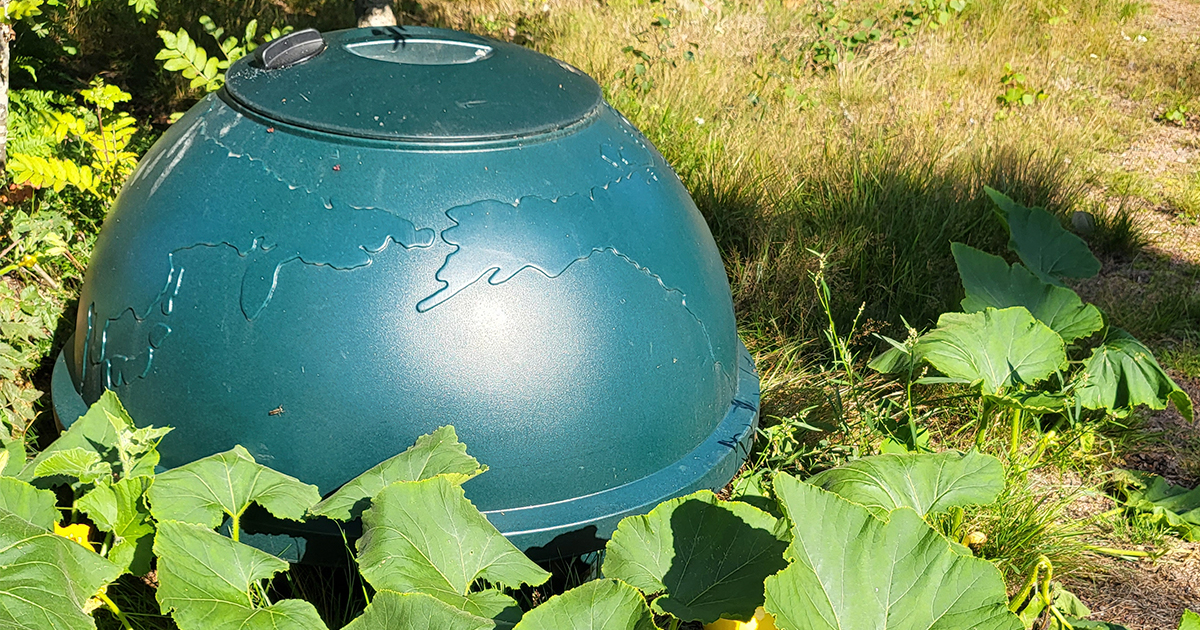
Composter’s Yearly Calendar: An Eco-Friendly Journey Throughout the Year
Welcome to the Composter’s Yearly Calendar! In this blog, we have gathered simple monthly tips and inspiration for the home composter for an eco-friendly life throughout the year.
January – New Beginnings
Let’s start the year strong! In January, we can add wilted Christmas flowers, coffee grounds, and other possible remnants from the holiday feasts to the compost. Make a New Year’s resolution: reduce the amount of waste and surrender to the natural cycle.
TIP:
Did you know that you can also put napkins and paper towels in the compost? They act as dry material; absorbing excess moisture and decomposing along with the rest of the waste.
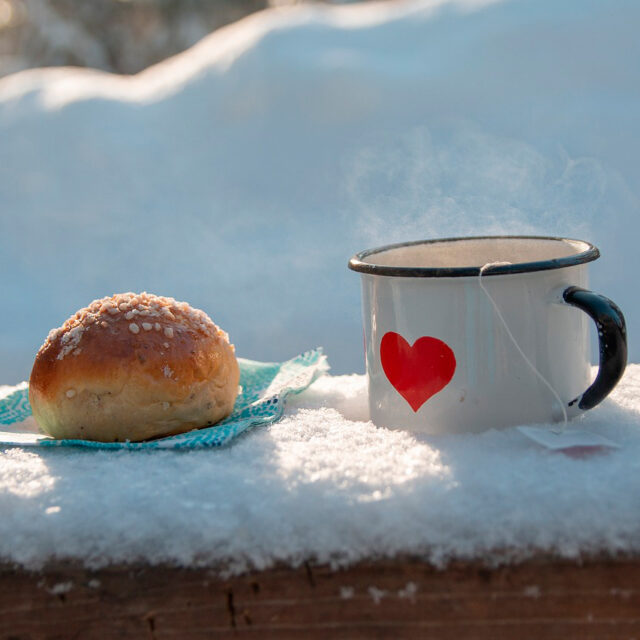
February – Composting with Different Tactics
February gives us the opportunity to be creative composters, even if the frost bites outside. Over the frost season, composting can be done with at least two tactics. If you own a thermal composter, you can try to maintain composting by taking care of the compost diligently: adding waste and dry material so that the moisture remains appropriate and mixing the compost. A conscientious composter can succeed in maintaining well over 30°C in the compost even in winter.
Another style is to enter the frost season with a compost bin so empty that it can accommodate the winter’s bio-waste. Even if the process slows down and the mass freezes, you can keep adding material as long as there is room.
Don’t be discouraged if your compost freezes! Year-round composting requires some diligence and sometimes even tools, such as the SULA compost heater. Freezing doesn’t in any way “ruin” the compost mass. The process will continue normally once the compost thaws in spring.
TIP:
Shovel snow around the composter for insulation! This way, you can even convert a non-insulated composter into a winter version.
March – The First Steps of Spring
If your composter is properly placed outdoors, it benefits from the spring sun. The mass thaws, warms up, and starts to decompose due to the heat. At this time, it is advisable to actively awaken the compost: Check that it is not too wet or dry and aerate the mass with a fork or a compost mixer. The microbes in the compost need oxygen to function, so the mass should not be too compact.
There are also compost accelerators available on the market, which can be used especially in early spring – especially if it seems like space is running out.
TIP:
Chicken manure, available for sale as a fertilizer in granular form, is one of the most effective compost accelerators. A handful or two in the mass and a stir, and the temperature will soon skyrocket!
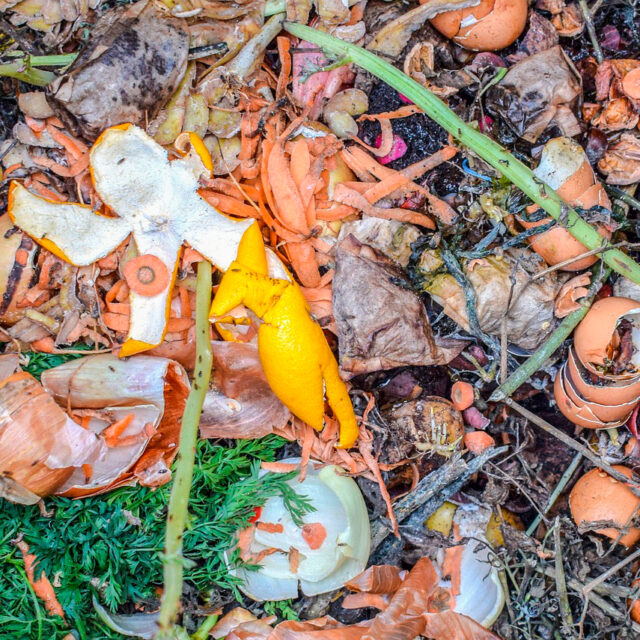
April – Add, Mix, Repeat!
With the growing season comes the active season for composting: Microbes do their work, and the mass begins to turn into soil from the older end. Remember to add all organic waste to the compost, so you can minimize the amount of mixed waste generated.
TIP:
A properly functioning compost smells good, a bit like oven-fresh, warm bread. If the scent is not pleasant, but rather sweet and sour – it’s time to add more dry material! Too wet compost will start to rot, and the smell will be accordingly. A generous addition of dry material and mixing can quickly fix the problem, in an hour or two.
May – The Gardener is Unleashed!
This is the moment many wait for all winter: fingers in the soil and into the garden work! As for composting kitchen bio-waste, the news is good, as it usually works vigorously throughout the growing season without much fuss.
A new problem might arise with garden waste. Even in a small yard, it usually accumulates a lot, and it doesn’t fit into the kitchen waste composter. It makes sense to establish a separate compost for dry leaves, branches, grass clippings, and other organic yard waste. An airy frame can be crafted even from wooden pallets. It doesn’t need to be tight or closed.
TIP:
Use some of the garden waste, such as dry leaves, as dry material in the bio-waste composter. You’ll save on having to buy dry material separately!
June – Me and My Composter in the Yard
The light and warmth invite spending time outdoors. Many move outside to cook, to summer kitchens, and beside grills. Fish are gutted, and bio-waste accumulates. Fortunately, it has a direct address in the composter in the yard.
Perhaps in June, you can already start emptying some finished compost from your composter. Remember, it is usually very nutrient-rich. Therefore, it’s good to mix it with other soil materials before using it to nourish your garden plants.
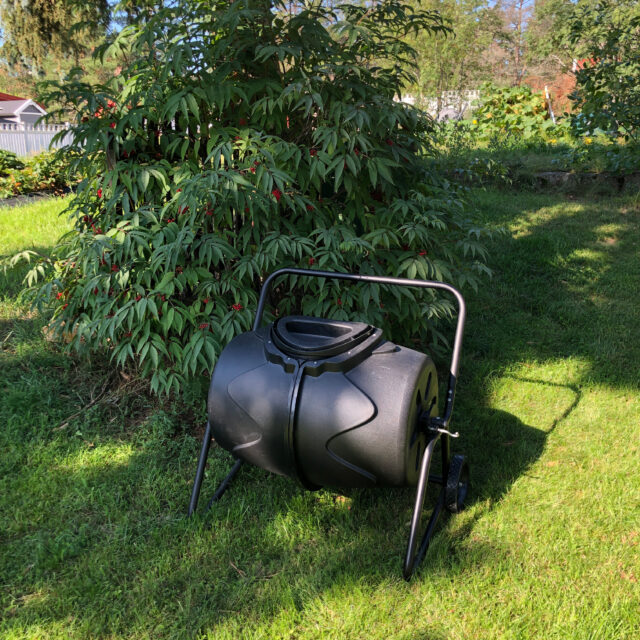
TIP:
Have you ever thought that you are a soil and fertilizer factory yourself? A clever gardener also moves their bathroom visits outdoors. Urine can be used directly, diluted with water, as a valuable eco-fertilizer for plants, and a composting dry toilet in the yard produces nutrient-rich soil. A summer toilet fits well into outdoor life – so, is it time to get an outhouse?
July – Water and Moisture are Needed
July can bring a long dry period, which affects not only plants but also the compost. Then, it may be necessary to water the compost either with water or urine. The activity of a dry compost slows down. Urine is the best for watering because it contains urea, which is a natural compost accelerator. It is also sold in stores, but we also produce it ourselves every day. For this purpose, there is a handy and pretty tool available especially for women: a Gold Potty!
TIP:
Sometimes compost starts to teem with life, especially if fish and meat waste have been added. Maggots find their way there first, and then flies. They don’t actually harm the composting process, but they can be offered to the winged creatures of the yard. Leave the compost bin lid open for a while, and swallows and other birds will thank you! In return, they reduce the number of mosquitoes that bother gardeners in the yard. A beautiful cycle!
August – Harvest and Dimming Evenings
In August, we enjoy the bounty of the yard and nature. Those parts that don’t end up in our mouths can be recycled through the compost in our own yard. Fertilization of the garden should be stopped, as plants slowly start to prepare for winter.
TIP:
Batch composting can be an effective method for those who generate a lot of organic waste. Many home composters are based on continuous composting: waste is added on top and finished material is emptied from the bottom. In batch composting, there are multiple composters: one is in active use while the others are resting. This system works well especially with garden and toilet waste.
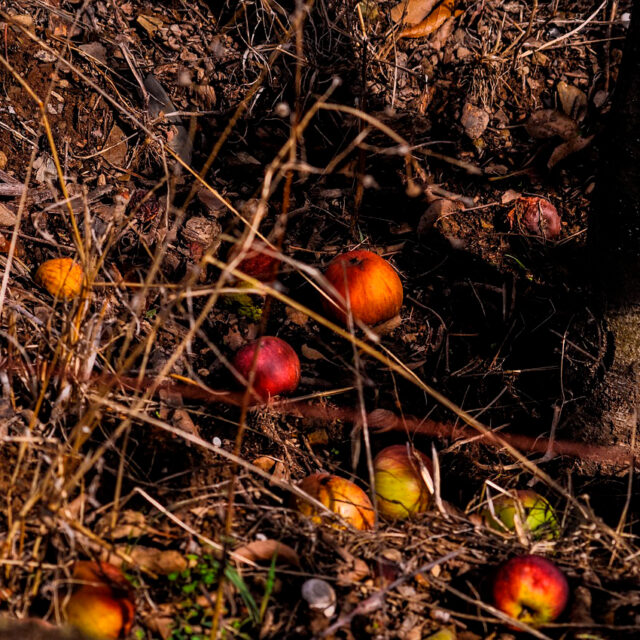
September – Harvest Time for the Compost
All good things come to an end. It’s time to empty the composter of finished soil, making room for winter waste. If there is a need to empty partially finished compost, you can continue composting bio-waste together with garden waste in an open composter. However, this partially finished mass should be decomposed enough that it no longer attracts rodents.
TIP:
Garden surplus, such as apples, can also be added to the compost if they are healthy. Plants or fruits with any plant disease should not be added to the compost, but rather disposed of through a waste station, for example.
October – Don’t Leave the Composter Alone
In October, you can give the compost the final touch before winter. Empty and turn it once more and make sure it’s ready to provide nutrient-rich soil again next spring.
TIP:
Consider if there’s a need to move the composter to a better location for winter use. A place close to the house and along unobstructed paths on the sunny side is best. Then, you’ll continue to visit the composter even in winter!
November-December – Compost Slows Down and Even Sleeps
Winter is here, and for many composts, it means the process quiets down, even stops. Active composters can keep the composting process going, but it’s not worth losing sleep over. During the winter, both the compost and nature in general prepare for their next cycle, eagerly awaiting the next spring.
TIP:
Use more dry material in the winter than in the summer, and for example, biodegradable paper bags for collecting waste in the kitchen. This way, the mass stays dry enough and is less likely to freeze. It’s also a good idea to chop up bio-waste into smaller pieces before taking it to the composter – this too speeds up decomposition.
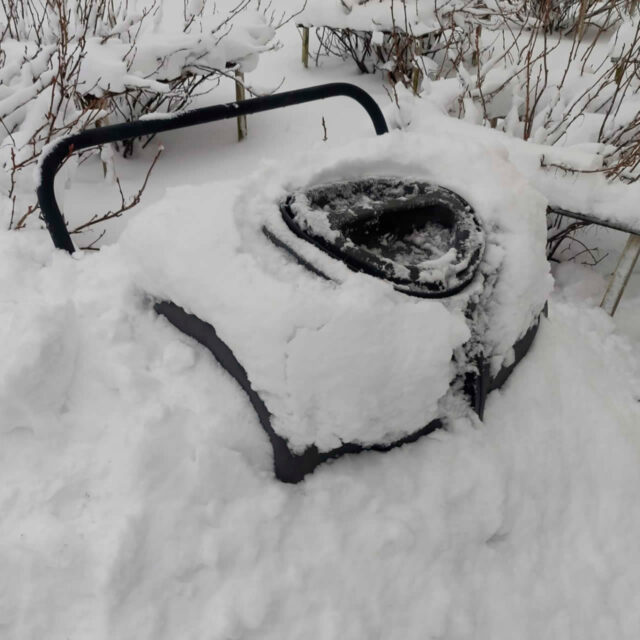
And finally, a warning: You can get seriously hooked on this mini-sized circular economy in your own yard! Nutrients circulate, plants flourish, and the mixed waste truck visits even less frequently. You can kick back, lean back, and be satisfied with your own achievement for the benefit of nature.

 Suomi
Suomi

